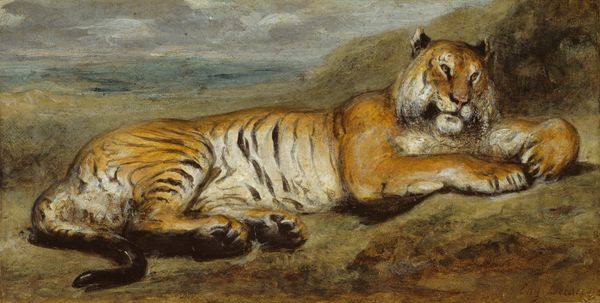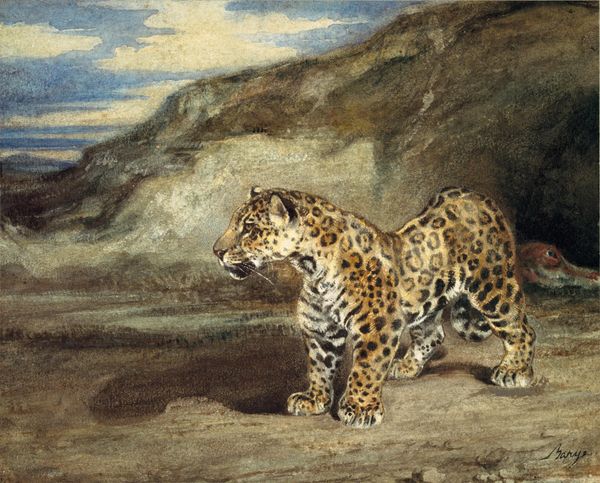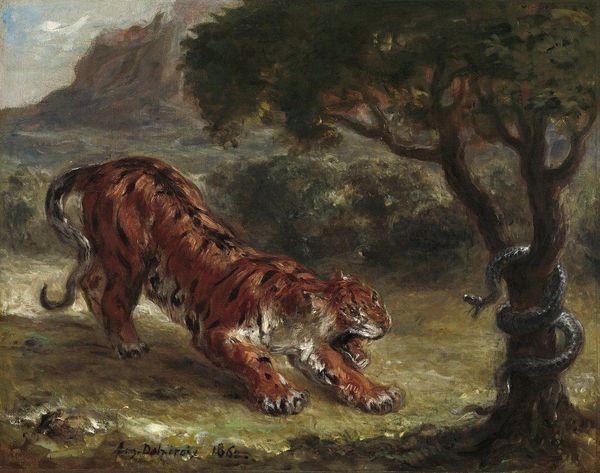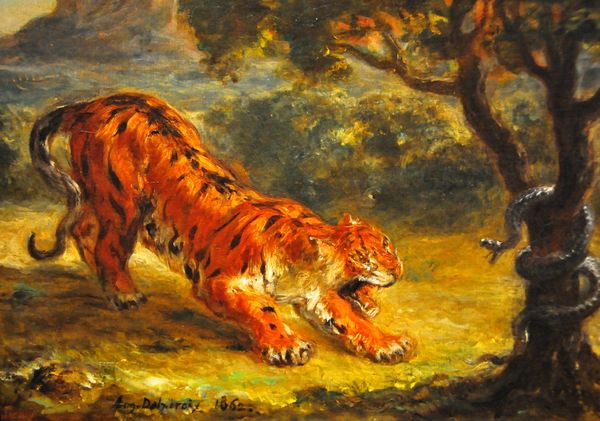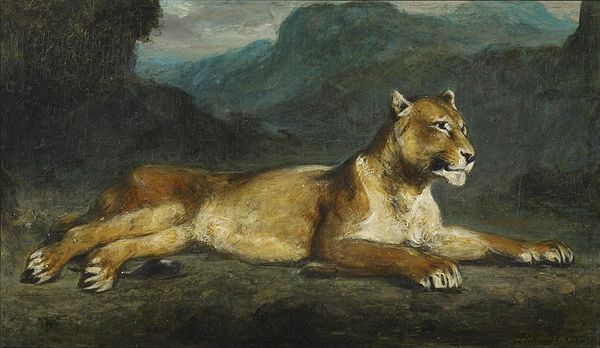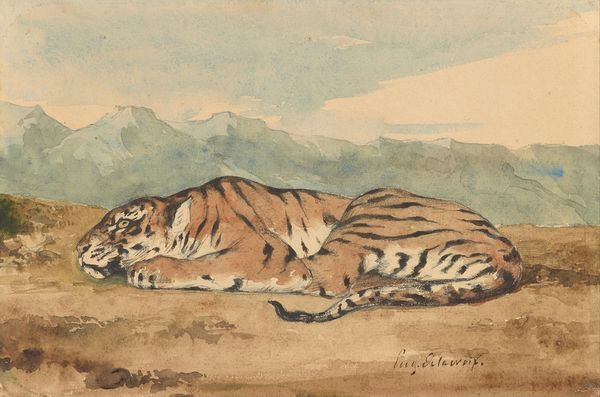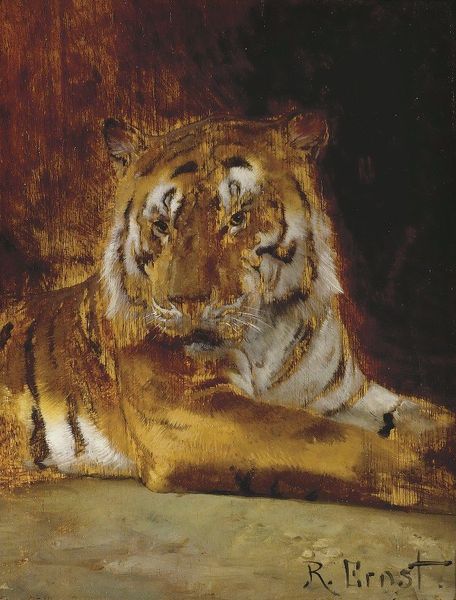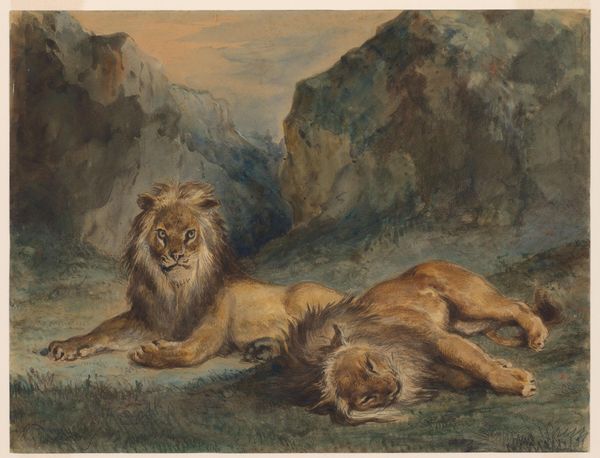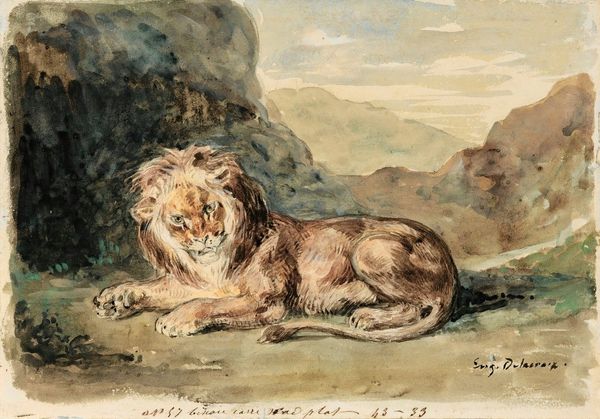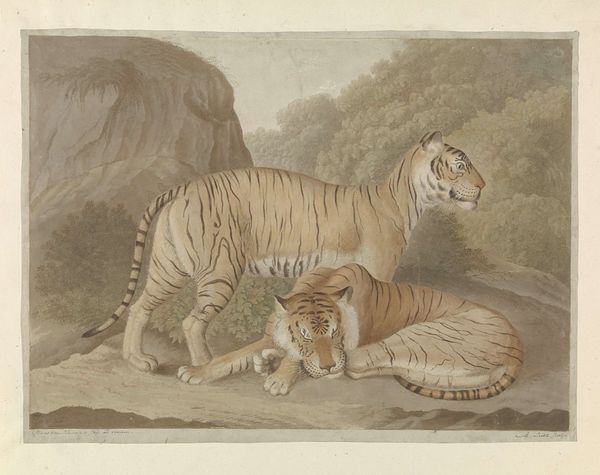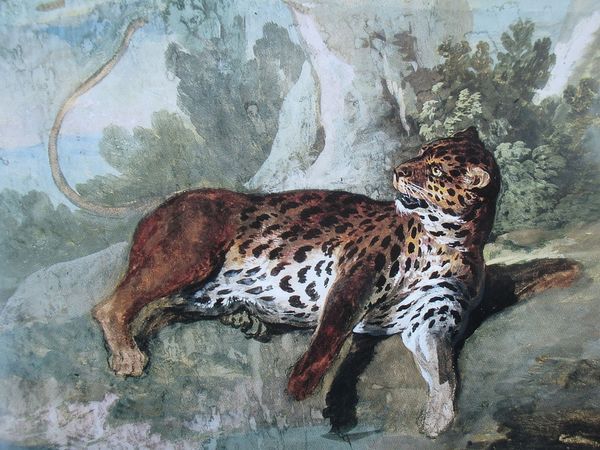
painting, oil-paint
#
portrait
#
narrative-art
#
animal
#
painting
#
oil-paint
#
oil painting
#
romanticism
#
animal portrait
Copyright: Public domain
Curator: What strikes you most about this canvas, at first glance? Editor: Definitely the intensity of the colors. Those oranges and browns create a sense of warmth, even though the tigers are in a somewhat ominous setting. Curator: Indeed. This is Eugène Delacroix’s "A Young Tiger Playing with Its Mother," painted in 1831. Delacroix was deeply interested in depicting the animal world as a reflection of primal nature and the power of instinct. He was a leading figure in the Romantic movement, and that focus really comes through here. Editor: Romanticism often glorified raw power, and the tiger certainly fits that bill. What do you think it tells us about the period when it was painted, besides its reflection of raw power? I wonder about the social forces at play, in representing this level of intimacy between mother and cub... Curator: Well, consider that, during this era, scientific understanding of animal behavior was still rather limited. Representations of animals often functioned as symbolic mirrors, reflecting societal anxieties or desires. I would suggest that the image speaks to contemporary preoccupations with motherhood. The protective aspect of motherhood. This tiger mother is, symbolically, protective. Editor: That's insightful. And what about the backdrop, though? It's not a jungle teeming with life, more like a sparse, almost barren landscape. What does that convey, that backdrop? Curator: The stark background intensifies the focus on the tigers themselves. It enhances their presence and makes their interaction all the more central. There’s a timeless quality. As though Delacroix is pulling back the curtain on an eternal tableau. Editor: Yes, an eternal moment—before zoos and the human imposition of labels. Just pure instinct and familial bond. And that connects it powerfully with audiences today. We're still drawn to those archetypes, those deep wells of emotion. Curator: Exactly, its symbolism continues to resonate with a population, generations onward. Even today the composition echoes that primal family structure. Editor: Well, it certainly gives us something to consider. It’s much more than just a picture of tigers, after all. Curator: Precisely. A meditation on our own human nature reflected back to us through the eyes of the animal kingdom.
Comments
No comments
Be the first to comment and join the conversation on the ultimate creative platform.
